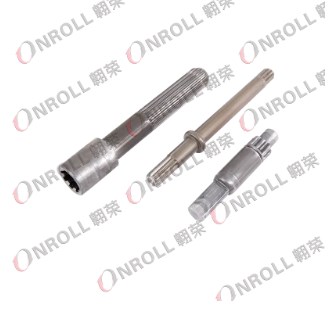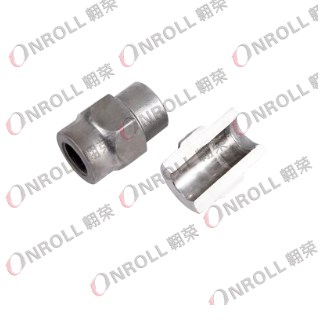Product Consultation
Your email address will not be published. Required fields are marked *
Cold Heading Agricultural Machinery Parts: A Foundation for Durability
Aug 06,2025What should you know about synchronizer guide block assembly?
Aug 06,2025Why Bus Gearbox Parts Are Critical for Vehicle Performance?
Aug 06,2025Commercial Vehicle Gearbox Parts: A Comprehensive Guide to Market Trends and Maintenance
Aug 06,2025With the rapid development of urban public transportation, buses have become an essential means of transportation for daily commutes. The reliability and efficiency of their powertrains directly impact operating costs and passenger experience. Bus gearbox parts play a crucial role in this system, determining not only the vehicle's power transmission efficiency but also its fuel economy and service life.
Core Structure of Bus Gearbox Parts
A bus gearbox consists of multiple components that work together to efficiently convert engine power to the wheels. Key components include gears, bearings, synchronizers, clutch assemblies, and control systems. Each of these components performs distinct functions, ensuring smooth and efficient transmission operation under varying operating conditions.
Gears are the core components of a transmission, converting the engine's rotational power into varying torques and speeds. Gear material selection, heat treatment processes, and tooth profile design directly impact the transmission's wear resistance and transmission efficiency. Bearings provide support and friction reduction, ensuring stable and low-noise operation at high speeds. Synchronizers ensure smoother gear shifts, avoid shift shock, and enhance driver comfort. The clutch assembly controls the connection and disconnection of power input, enabling smooth vehicle launch, acceleration, and gear shifting.
How Bus Gearbox Parts Work
During the power transmission process, transmission components work together to convert energy from the engine to the wheels. Engine power enters the transmission through the input shaft, where the gear train changes the speed and torque of the output shaft according to the gear position. Synchronizers ensure that the gears match speed during meshing, enabling smooth gear shifting. Bearings reduce friction during gear rotation, extending component life. Precise control of the clutch assembly ensures smooth transitions during launch and gear shifting, avoiding power interruptions or shocks.

Modern bus transmissions are experiencing continuous advancements in control systems. Electronic Control Units (ECUs) monitor engine and transmission operating conditions in real time to intelligently adjust shifting strategies, improving fuel economy and driving comfort. Intelligent control not only optimizes power output but also extends the life of transmission components.
Materials and Manufacturing Processes for Bus Gearbox Parts
To meet the demands of long-term, high-load operation in buses, the materials and manufacturing processes of transmission components are crucial. Gears are typically made of high-strength alloy steel, enhanced by precision forging and heat treatment processes for wear and fatigue resistance. Bearings are typically high-precision rolling bearings, ensuring low friction and long life. Synchronizer and clutch assemblies prioritize the high-temperature resistance and stability of the friction material.
With the advancement of advanced manufacturing technology, the machining precision of transmission components continues to improve. CNC machining, gear grinding, and precision heat treatment technologies enable components to achieve higher standards of strength, wear resistance, and operating precision, thereby enhancing the reliability and efficiency of the bus's overall powertrain.
Maintenance and Care of Bus Gearbox Parts
The service life of transmission components depends not only on design and manufacturing quality, but also on effective maintenance and care. During daily operation, regular inspections of gear meshing, lubricant quality and level, and clutch wear are crucial to extending transmission life. High-quality lubricant reduces friction and wear, preventing component overheating and fatigue damage.
With the prevalence of electronically controlled transmissions, fault diagnosis systems have become a crucial maintenance tool. Sensors and ECUs monitor the operating status of transmission components in real time, promptly identifying potential problems and preventing vehicle failures caused by component damage.
Bus gearbox parts are core components of the vehicle's powertrain. Their design, manufacturing, and maintenance are directly related to the bus's performance, reliability, and service life. From gears, bearings, synchronizers, to clutch assemblies, every component plays a critical role in power transmission. With continuous technological advancements, gearbox components are developing towards intelligent, lightweight, and high-performance features, providing more efficient and reliable power for modern urban buses.
Your email address will not be published. Required fields are marked *

(+86)-191 0581 0729
(+86)-137 5850 1558

